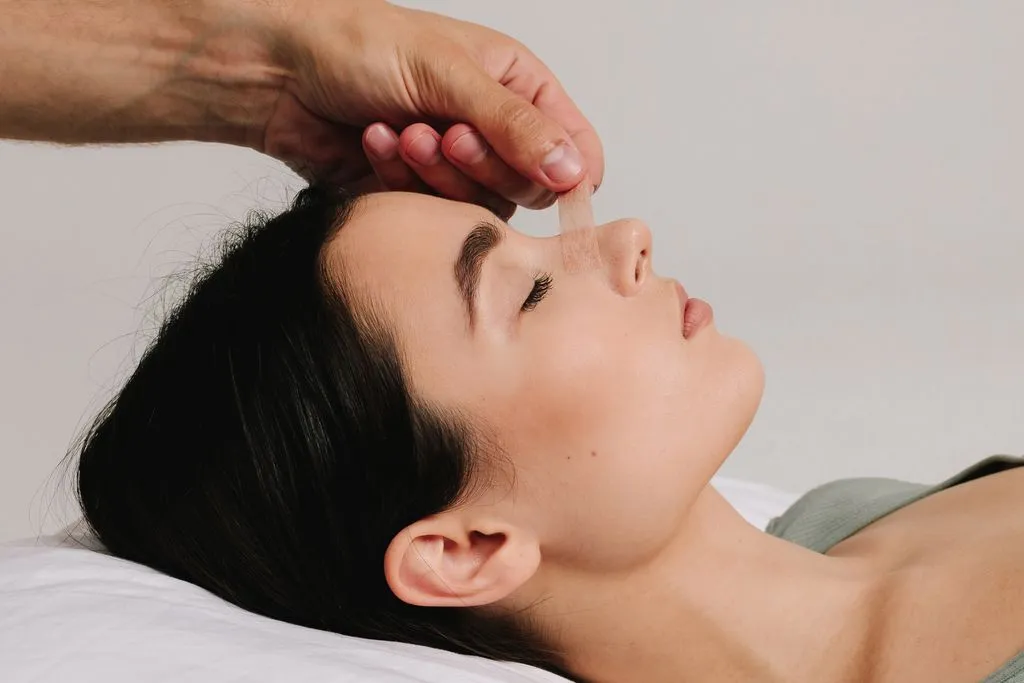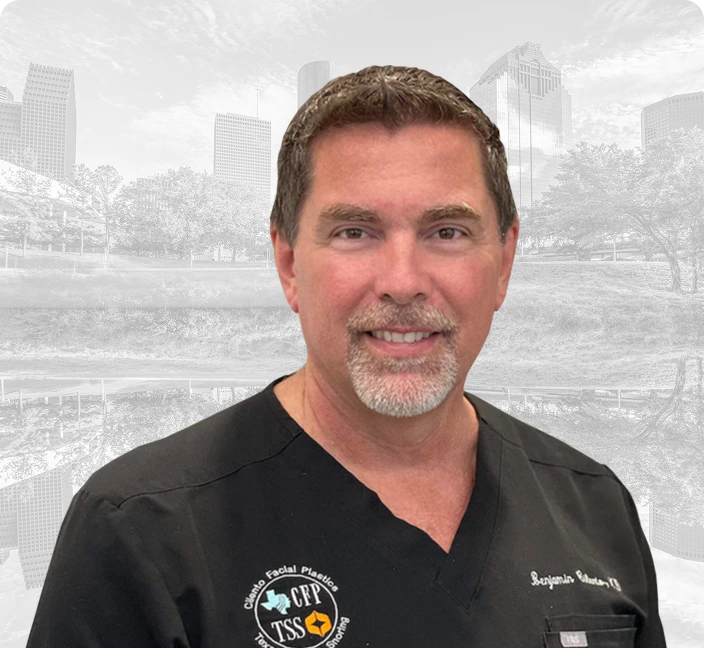The Purpose of Septoplasty
Septoplasty is a surgical procedure that corrects a deviated septum. This treatment is vital for restoring nasal function and improving overall quality of life. The septum, a thin wall of cartilage and bone separating the nasal passages, should ideally be straight and centered. However, due to various factors, such as trauma, genetics, or natural development, it can become deviated or misaligned, obstructing airflow and causing multiple symptoms. These symptoms may include nasal congestion, difficulty breathing, snoring, recurrent sinus infections, and sleep apnea.
The primary objective of septoplasty is to realign the septum, allowing for improved nasal airflow, proper drainage, and better function of the nasal passages. Septoplasty corrects a deviated septum, which resolves the physical blockage and relieves related symptoms. This procedure ultimately improves breathing, sleep quality, and overall well-being.
Preparing for Septoplasty Recovery
Preparing for septoplasty recovery begins well before the surgery itself. It’s essential to clearly understand what to expect during recovery to ensure a smooth healing journey. One of the first steps is to consult an experienced otolaryngologist specializing in nasal surgery. They will evaluate your condition, explain the procedure, and discuss your goals and expectations.
Additionally, your doctor will provide you with a comprehensive list of preoperative instructions and precautions to follow. These instructions may include dietary guidelines, avoiding medications, and lifestyle adjustments before the surgery. It is crucial to adhere to these guidelines to minimize the risk of complications.
Preoperative Instructions and Precautions
Before your septoplasty, your doctor will provide specific preoperative instructions for safe and successful surgery. These include fasting guidelines, medication restrictions, and activity avoidance. Following these instructions diligently minimizes risks and optimizes the procedure’s effectiveness. Your doctor may also order tests like blood work, imaging scans, or nasal endoscopy to assess the severity of your deviated septum and plan accordingly.
Arranging Support and Assistance
While septoplasty is typically an outpatient procedure, arranging for support and assistance during recovery is still essential. The initial days following surgery may involve discomfort and limited mobility, making it crucial to have someone available to help you with daily activities and provide emotional support.
Reach out to family members, friends, or close colleagues and explain your situation to them. Inform them about the upcoming surgery and the expected septoplasty recovery time so that they can plan accordingly. Having someone by your side during the first few days can alleviate stress, ensure proper care, and facilitate a smoother recovery process.
The Initial Recovery Period
During the initial septoplasty recovery time, it’s crucial to prioritize rest and allow your body to heal. Follow your doctor’s instructions for pain management, wound care, and activity limitations. It’s normal to experience swelling, bruising, and nasal discomfort. Using cold compresses as directed can reduce swelling and provide relief.
Immediate Post-Operative Care (First 24 Hours)
Immediately after septoplasty, you will be closely monitored in a recovery area until the effects of anesthesia wear off. Your doctor and medical staff will ensure your vital signs are stable and promptly address any immediate post-operative complications. Once you are deemed stable, you will be discharged with detailed instructions for at-home care.
These instructions may include information on changing nasal dressings, cleaning the surgical site, and managing drainage or bleeding. Following these instructions diligently is vital to reduce the risk of infection and facilitate optimal healing.
Managing Pain and Discomfort After Septoplasty Surgery
During the initial phase of recovery after septoplasty, it is normal to experience pain and discomfort. Your doctor will provide suitable pain medication to address post-operative pain effectively. It is essential to follow the prescribed dosage instructions and consult your healthcare provider if you experience severe pain that worsens over time.
Apart from medication, there are alternative steps you can take to alleviate pain and discomfort. Applying cold compresses to the nasal region can aid in reducing swelling and numbing the area, offering relief. Additionally, keeping your head elevated while resting or sleeping can minimize swelling and facilitate improved drainage.
Nasal Congestion and Bleeding
Nasal congestion and occasional bleeding are expected during the recovery from a deviated septum surgery. These symptoms are primarily caused by swelling and the body’s natural healing response. To alleviate nasal congestion, your doctor may recommend using saline nasal sprays or irrigation systems to keep the nasal passages moist and clear.
It is essential to avoid blowing your nose forcefully, as this can disrupt the healing process and potentially cause bleeding. Instead, gently dab the nose with a tissue or use a nasal aspirator if necessary. If you experience excessive bleeding that persists for over a few minutes, contact your doctor immediately for further guidance.
Avoiding Strenuous Activities During the First Week
During the first week after septoplasty, it is crucial to avoid any strenuous activities that could interfere with proper healing. Even though septoplasty isn’t a major surgery, the nasal tissues remain delicate and vulnerable during the initial recovery phase. Engaging in heavy lifting, vigorous exercise, or bending over can increase blood pressure in the nasal area, which may lead to complications such as mild bloody drainage or increased swelling.
To support the healing process, your doctor may also recommend taking anti-inflammatory medications to reduce discomfort and inflammation. Additionally, it is crucial to avoid nose blowing, as this action can disrupt the surgical site and delay recovery. Following these precautions carefully and attending follow-up appointments as scheduled will help ensure the best possible outcome and a smoother return to normal activities.
Healing and Long-Term Recovery
As the initial recovery period progresses, your body will gradually heal, and you will begin to experience the long-term benefits of septoplasty. Understanding the healing process and your recovery timeline is essential to set appropriate expectations. Here’s what you need to know:
Nasal Care and Hygiene
Maintaining proper nasal care and hygiene is paramount for a successful and uneventful recovery. Your surgeon will provide comprehensive guidelines on cleaning your nose, including specific instructions regarding frequency and technique. It is vital to diligently adhere to these instructions to minimize the possibility of infection and facilitate optimal healing.
You may be advised to use saline sprays or rinses to keep the nasal passages moisturized. These products can help remove debris, reduce crusting, and alleviate congestion. It is essential to use only the recommended products and techniques provided by your surgeon to avoid any potential complications.
Return to Normal Activities and Exercise Guidelines
While resting and allowing your body to heal during the initial recovery period is essential, gradually increasing your activity levels is crucial for a successful long-term recovery. Your surgeon will provide specific guidelines regarding when and how to resume regular activities and exercise.
Engaging in light activities, such as short walks, can be beneficial in enhancing blood circulation and reducing the chances of complications. However, it is essential to steer clear of strenuous activities, heavy lifting, or any actions that could potentially elevate your blood pressure, as advised by your surgeon, throughout the recommended duration.
Potential Complications and Red Flags
Long-term symptom relief, increased airflow, and a decreased risk of sinus infections are just a few advantages of surgically treating concha bullosa. People can make more informed decisions regarding their treatment options if they know the possible benefits of surgery.
Identifying Warning Signs
- Excessive bleeding that does not subside or intensifies
- Severe pain that is not relieved by prescribed medication
- Symptoms of infection, such as persistent fever or increasing redness, swelling, or drainage from the surgical site
- Difficulty breathing or shortness of breath
- Changes in vision, severe headaches, or neurological symptoms
If you experience any of these symptoms or have concerns about your recovery, contact your healthcare provider immediately.
Psychological and Emotional Considerations
Recovery from septoplasty involves physical healing and psychological and emotional adjustment. It is common for patients to experience a range of emotions during this period, including anxiety, frustration, or even mild depression. These feelings are often associated with temporary discomfort, changes in appearance, and the adjustment process itself.
Remember that it is normal to feel a mix of emotions during recovery. Give yourself time to adapt and be patient with the healing process. It can be helpful to reach out to your support network, such as friends, family, or online communities, to share your experiences and seek advice from those who have gone through a similar journey.
Taking care of your mental well-being is just as important as physical recovery. During this transformative phase, engaging in relaxation techniques, pursuing hobbies, and practicing self-care can promote a positive mindset and overall well-being.
Our Healthcare Providers Can Help You Minimize Septoplasty Recovery Time!
Recovering from septoplasty, a procedure that addresses a deviated septum, is a crucial process that necessitates adequate preparation, adherence to post-operative instructions, and patience. You can confidently navigate this transformative journey by understanding the purpose of septoplasty, preparing for recovery, and recognizing potential challenges and warning signs. Your health and well-being take center stage throughout this process, and with the proper support and care, you can achieve optimal results.
At Texas Sinus & Snoring, we value the significance of a successful recovery from septoplasty. Our team is devoted to providing outstanding care and support throughout the process. We provide comprehensive treatment options for deviated septum, focusing on personalized care tailored to your needs. If needed, septoplasty can be combined with facial plastic surgery to achieve your aesthetic goals.
Our specialists can assist you whether you require surgical intervention or seek guidance for a smooth recovery. Take the first step toward transformative recovery from a deviated septum by contacting Texas Sinus & Snoring today.
Are There Other Treatments for a Deviated Septum?
While septoplasty is the most common surgical option to correct a deviated nasal septum and achieve improved nasal function, additional treatments exist. In some cases, sinus surgery may be recommended alongside septoplasty to address chronic sinus issues or blockages. For patients who experience trouble breathing primarily during sleep, especially those with sleep apnea, using devices such as CPAP machines or positional therapy may help keep the airway open without surgery. Some minor procedures, such as turbinate reduction, can be performed under local anesthesia to reduce discomfort and recovery time. It is also important to avoid sleeping with your mouth open, as this can worsen nasal dryness and congestion. Consulting with your healthcare provider will help determine the best personalized approach to manage your deviated septum and improve your overall breathing.




